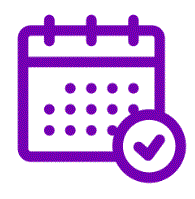Six Steps Toward Planning for Remote Learning
With the COVID-19 outbreak, we understand you are planning for a range of possible circumstances. Our team joined together to help you in this process. As a start, we organized several resources and recommendations for school leaders and teachers in our Remote Learning Resource Center.
One very real possibility is the closing of schools. We have compiled a list of six key priorities that will help school and district leaders plan for continued learning in the event students cannot come to school. See the six priorities below as well as a downloadable planning template. We hope you find this helpful. Please let us know how we can continue to support your efforts by reaching out to us via email at info@linclearning.com or on Twitter @linc_pd.
| Plan for Continued Student Learning in the Event of School Closing |
||
|
|
|
|
1. Establish Communication Structures and Protocols |
Communications Protocols (How, when and where?)
|
Determine how assignments will be shared with students and collected by teachers. Decide on how teachers should take attendance and know when students are “absent.” Determine protocols for what teachers should do if students are absent. Consider virtual office hours for teachers. Create a space for teachers to communicate, collaborate, and ask questions. Be sure there is someone assigned to provide timely feedback and responses. |
2. Set Clear Expectations for Remote Structures and Routines |
School Structure and Routines
|
Consider starting with asynchronous learning at first while teachers, students and families are getting adjusted and then move to synchronous. Consider surveying families throughout to get feedback and act on it if necessary. Provide family support - It is imperative that families stay informed and feel supported during this time. Create a one-stop shop for online resources as well as determining a strategy for sharing information with families who do not have digital access at home. |
| 3. Get Your Teachers and Distance Learning Toolkit Ready!
|
|
Some districts are closing a day early to provide training to teachers. If possible hold daily staff virtual meetings where teachers share best practices. See our Educator Resource List with ideas and resources for remote learning. This list provides tools providing the pro version for free to closed schools. |
| 4. Plan for Access to Technology and Your Digital Toolkit
|
|
Start to onboard your students to available technology and tools now. Get them set up with accounts and necessary log-in information on your selected tools. Train students before they leave Communicate with families of the tools students will be using. Send home instructions/video for accessing online platforms/digital tools. Prepare them to think about space for students at home or other places for focused learning time. Students will have all sorts of devices, make sure the learning is compatible with cell phones, older devices, etc. |
| 5. Establish Community Connections
|
|
Determine whether students can gain access to devices and WiFi at local centers such as libraries or community centers. Let families know where students can get meals they would normally get during the school day. Share all relevant information regularly with families both digitally and through community partners |
| 6. Take care of your community - Social and Emotional Care
|
There are many changes taking place and many unknowns which may heighten anxiety. Make the social and emotional care of your community a priority.
|
Have a plan for students who may struggle adapting to online learning that engages them and their families through regular phone calls and other communication. |
Access editable version of this template for your school plan here.



